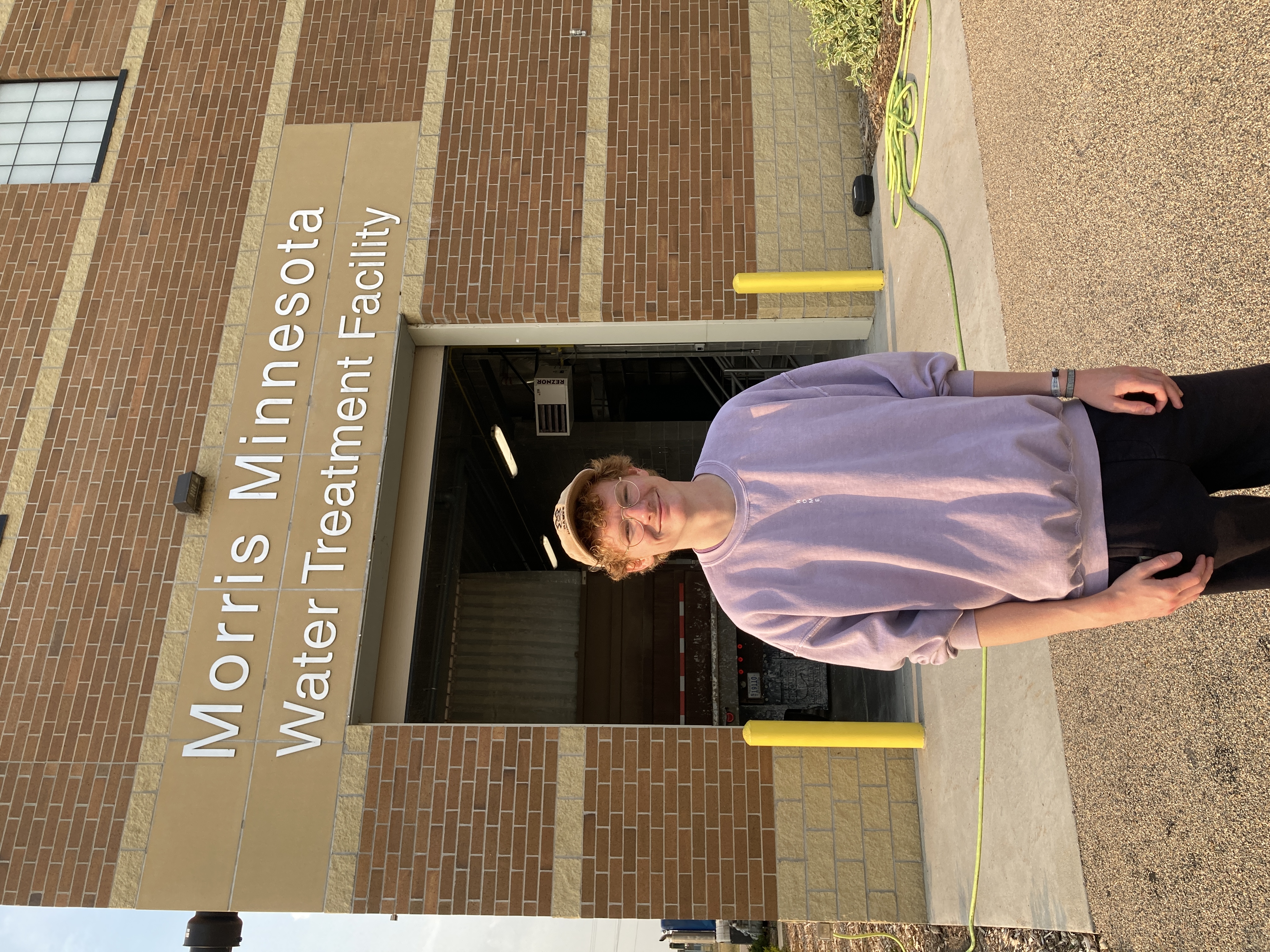In 2019, the city of Morris built a new state-of-the-art water treatment plant to produce drinking water for the community, replace its 40-year old drinking-water plant, and address environmental concerns about the amount of chloride being discharged into the Pomme de Terre River.
Morris has some of the hardest groundwater in Minnesota. Prior to the construction of the new drinking-water treatment plant, most Morris residents relied on in-home water softeners to remove minerals in the water with salt.
Additionally, on the back-end, wastewater treatment plants aren’t built to remove salt from entering their systems, so the salty brine from in-home water softeners was being discharged into the Pomme de Terre River. The State of Minnesota notified the city that it was releasing more chloride than allowed by state standards and asked city officials to address this environmental problem.
Since the new drinking-water plant went online, the hardness of the water being piped to homes and businesses was reduced from 45 grains to 5 grains, using a soda ash and lime process. Additionally, the city of Morris has seen the ‘saltiness’ of the water plummet at the inlet to the downstream wastewater treatment plant – a clear demonstration of success.
Morris isn’t the only small town that has to deal with this issue. In fact, in 2019 Morris was one of an estimated 100 Minnesota cities discharging too much chloride from their wastewater plants. So a community team, including the University of Minnesota Morris, the City of Morris, and University of Minnesota Extension’s Southwest Regional Sustainable Development Partnership asked the question: How do we help other cities in Minnesota learn from the Morris experience to address chloride pollution?
Morris city manager Blaine Hill, ’87, who led the effort to build the new drinking-water plant, was also interested in making more information available to the public about the freshwater plant. Hill also wanted to explore the potential of integrating renewable energy and energy storage at the drinking-water plant. The new drinking-water plant sits on UMN Morris land and is prominent when you enter campus from the east. The freshwater plant sits adjacent to the campus’s new agrivoltatic 240kW solar photovoltaic field.
The city of Morris and UMN Morris are also longtime partners of the UMN Institute on the Environment Climate Smart Municipalities program, working closely with their sister-city Saerbeck, Germany, and the Muenster University of Applied Sciences.
In spring 2022, the team invited Michael Abbing, a visiting scholar and Master’s student in water science at the Muenster University of Applied Sciences, to visit Morris for several months to help characterize the performance of the Morris Drinking-Water Treatment Plant. Abbing is studying the plant’s input, outputs, and energy usage.
Abbing is the fourth J-1 visa student to visit UMN Morris from the Muenster University of Applied Sciences, a partnership with Professor Christof Wetter. Previous interns have assessed the potential for district heating in Morris, explored the potential for solar PV at the Morris Area School District, and researched alternative heating concepts for the campus.
A report will be released in fall 2022 with details about the Morris Water Treatment plant.
This current water-focused project builds on the campus’s West Central Minnesota We Are Water program, which is working to help build a shared water ethic in our region in collaboration with the Minnesota Humanities Center.
